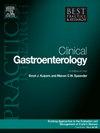Quality in screening colonoscopy
IF 4
3区 医学
Q2 GASTROENTEROLOGY & HEPATOLOGY
Best Practice & Research Clinical Gastroenterology
Pub Date : 2025-06-01
DOI:10.1016/j.bpg.2025.102026
引用次数: 0
Abstract
Over the past two decades, the importance of colonoscopy quality has gained increasing recognition. Variability in lesion detection rates among endoscopists and missed lesions have been identified as key contributors to post-colonoscopy colorectal cancer (post-colonoscopy CRC). This has driven the development of standardized quality indicators aimed at minimizing these gaps. Quality indicators are categorized into pre-procedural, intra-procedural, and post-procedural phases and encompass a range of technical, cognitive, and administrative factors. While different professional societies emphasize the importance of various indicators, they all include the most validated measures, such as bowel preparation quality, detection metrics, cecal intubation rate, complication rates, and appropriate surveillance recommendations. It is important not to evaluate these indicators in isolation, as they interact and influence each other, collectively determining the overall effectiveness of the procedure.
This review discusses the latest evidence on colonoscopy quality indicators, their impact on clinical outcomes, and practical strategies to enhance detection rates and procedural quality.
结肠镜筛查的质量
在过去的二十年里,结肠镜检查质量的重要性得到了越来越多的认识。内镜检查中病变检出率的差异和漏诊病变已被确定为结肠镜检查后结直肠癌(结肠镜检查后结直肠癌)的关键因素。这推动了旨在尽量减少这些差距的标准化质量指标的发展。质量指标分为程序前阶段、程序内阶段和程序后阶段,包括一系列技术、认知和管理因素。虽然不同的专业协会强调各种指标的重要性,但它们都包括最有效的措施,如肠道准备质量、检测指标、盲肠插管率、并发症发生率和适当的监测建议。重要的是不要孤立地评价这些指标,因为它们相互作用和相互影响,共同决定程序的总体有效性。本文综述了结肠镜检查质量指标的最新证据,它们对临床结果的影响,以及提高检出率和手术质量的实用策略。
本文章由计算机程序翻译,如有差异,请以英文原文为准。
求助全文
约1分钟内获得全文
求助全文
来源期刊
CiteScore
5.50
自引率
0.00%
发文量
23
审稿时长
69 days
期刊介绍:
Each topic-based issue of Best Practice & Research Clinical Gastroenterology will provide a comprehensive review of current clinical practice and thinking within the specialty of gastroenterology.

 求助内容:
求助内容: 应助结果提醒方式:
应助结果提醒方式:


